
High density case study: Sunmar
Steven Falivene (NSW DPI): March 2018
Daniel Lazar manages 100 ha of citrus orchard owned by John Keams in the Sunraysia region. John is a keen innovator who is always looking to maximise productivity and efficiency from established blocks with high density plantings of Afourer mandarins and navel oranges. Daniel recently presented Sunmars' high density management growing techniques at the NSW DPI citrus roadshow in October 2017. The following article overviews his discussion. An economic analysis of this high density planting case study is published on the NSW DPI website.
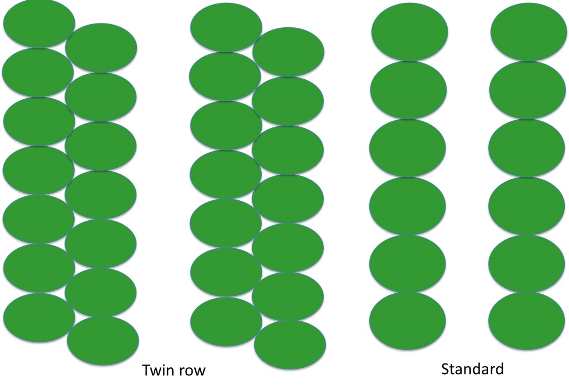
Traditional standard density trees are about 440 trees per hectare (6.5 m × 3.4 m or 22’ × 11’). The orchard has two types of high density planting layouts; a twin row and a standard layout (Figures 1 and 2). The twin row high trees are planted at 952 trees per hectare and the standard layout high density trees at 600 trees per hectare (5.2 m × 3.2 m).
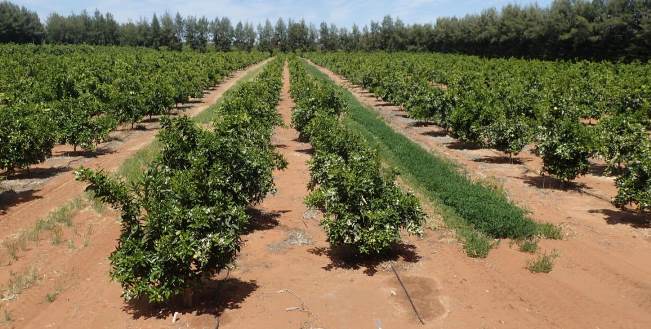
Daniel has been managing the orchard for two years and emphasises that the high density planting requires an intensive annual pruning program. Without annual pruning the productivity of the high density block can quickly decline below traditional planting densities. As the trees grow the row spacing closes (Figure 3) and the frequency to hedge the trees for tractor access increases. For high density trees with narrow row spacing (i.e. less than 5.5 m), annual side hedging could be required. Hedging will cut off bearing wood and potential crop. The solution is to implement an intensive annual hand pruning program that results in more fruit bearing inside the tree. The trees will still need regular hedging, perhaps every second year instead of annually, and when the trees are hedged only a small portion of fruit bearing shoots are cut off (Figure 4).
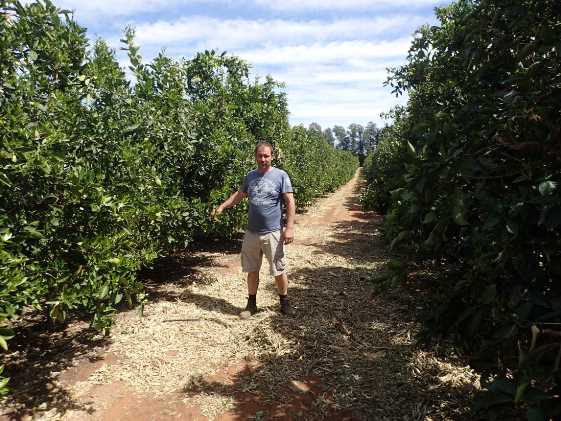
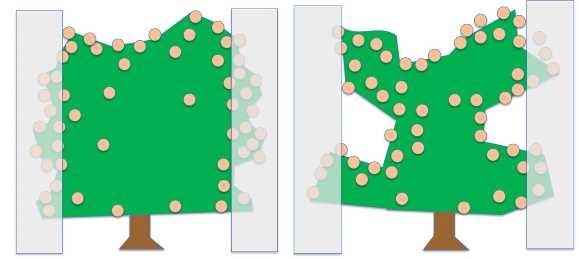
The twin row layout does require a few extra herbicide sprays and a higher application coverage volume in the early years. Irrigation and foliar spray volumes also slightly increase. However, these extra costs are minimal in terms of the total cost of production. To enter the Chinese export program the blocks needed to be trunk band sprayed and this is impossible for the twin row layout blocks using a conventional trunk band sprayer that can only spray one side of the trunk per tractor pass. Daniel overcomes this problem by inventing a trunk band sprayer that can spray all around the trunk from a one-side tractor pass (Figure 5)
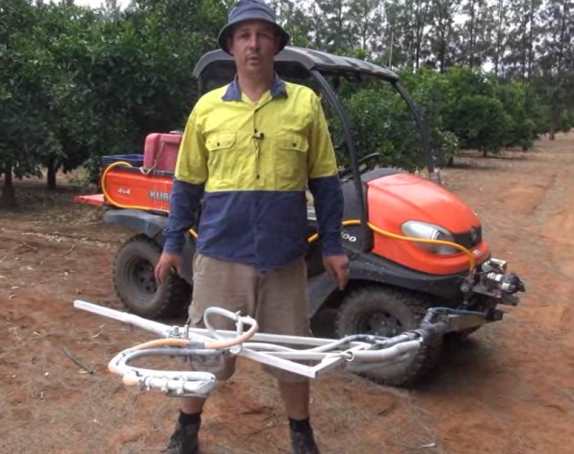
Daniel starts hand pruning trees from a young age so the trees have a good structure by maturity. Annual pruning costs on average $1.60 per tree on the standard high density layout ($1000/ha) and about $1.30 for the twin row layout ($1250/ha). The twin row layout trees are smaller and therefore have a slightly lower per tree cost. Pruning costs will vary season to season. The program has been producing very good long term average yields of navels of about 55 t/ha for the standard layout high density navels and 63 t/ha for the twin row layout. Without the annual hand pruning program, yields would be 15 t/ha to 20 t/ha less; that’s a loss of up to $13,500/ha ($650/t fruit price). Investing $1250/ha in pruning and getting $13,500/ha return is a very good investment. I also get less blemished fruit which increases my pack-out and per ton price.
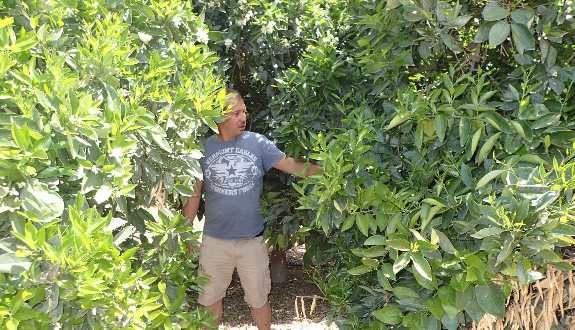
The take home advice Daniel wishes to provide growers is high density planting will provide higher early yields and twin row planting will provide higher mature tree yields, but annual hand pruning is essential to maintain good yields.
Steven Falivene, NSW DPI Citrus Development Officer, economically analysed the high density scenarios using the 20 year NSW DPI citrus budget sheets and based the most relevant production practices and yield assumptions on Sunmar’s information. The economic analysis is in the “Economic analysis of high density planting at Sunmar Orchards, Sunraysia” article.

